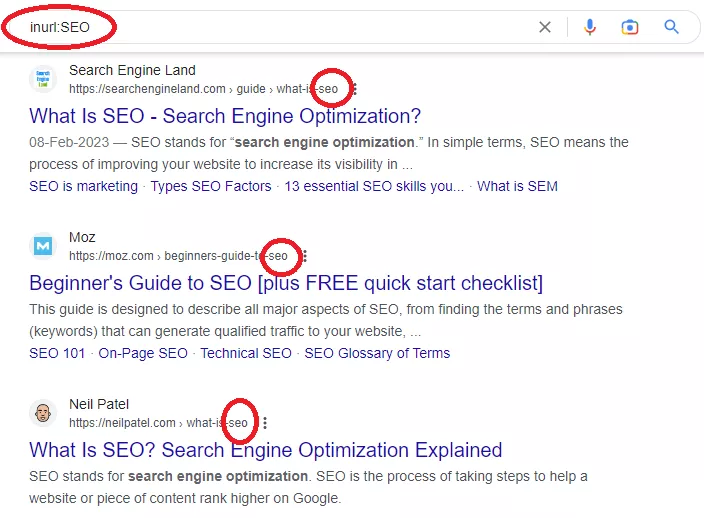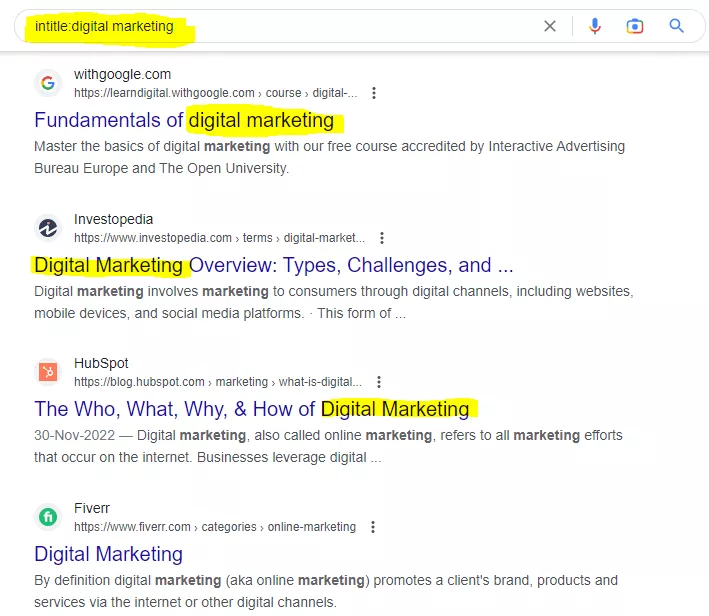What are Footprints?
Footprints - aka digital footprints or SEO footprints - are identifiers or patterns that can be used to recognize websites or web pages with specific attributes or characteristics.
These patterns can take various forms, such as a particular coding pattern, a specific keyword, a common backlink profile, or any other characteristic that links these websites together.
Footprints are used by different entities for different purposes, such as competitor analysis, link building, and content creation.
For instance, a footprint might be the use of a particular platform or content management system (CMS).
Like, if you are looking for websites built on WordPress, you might search for "powered by WordPress" to identify websites which use that platform.
Why are footprints important in SEO?
They are important in SEO in the following ways:
Targeting specific audiences and niches
Footprints can help marketers find websites and web pages that are focused on specific topics or industries.
By using niche-specific footprints, marketers can target their content and marketing efforts to specific audiences, increasing the relevance and effectiveness of their SEO strategy.
Finding relevant websites for link-building
Footprints can be used to identify websites that are likely to provide valuable backlinks. You can search for websites that accept guest posts or have resource pages related to your industry and then reach out to those websites for link-building opportunities.
Refining search queries for better results
Searching online can be improved to find better information. Footprints and search operators can be combined with search terms to make queries more specific.
This helps reduce unimportant sites and spam in the results. It allows people to more easily discover high-quality web pages and websites relevant to their needs.
By using focused search refinement tools, search becomes more effective at pinpointing useful content.
Identifying competitor strategies and opportunities
You can use footprints to study what your business competitors are doing online and spot ways you could improve. Search for sites and pages that link to their sites. Then use what you find to tweak your own plans.
It helps you see their web strategy. And it might show things they're missing that your business could do instead.
Saving time and resources with efficient searching
Footprints can help people save time and resources by targeting their search efforts more effectively.
By using specific footprints, you can quickly find the most relevant websites and web pages without wasting time sifting through irrelevant results.
Enhancing overall SEO strategy and performance
Footprints are an important tool for enhancing the overall SEO strategy and performance. By using footprints to target specific audiences, find high-quality backlink opportunities, and refine search queries, one can improve the relevance and effectiveness of their SEO efforts.
This, in turn, can lead to better search rankings, increased organic traffic, and higher conversion rates.
Examples
Here are some examples of footprints commonly used in SEO:
Platform footprints
These are specific phrases or keywords that can be used to identify websites or web pages built on a particular platform or CMS (content management system).
Examples include "powered by WordPress", "built with Shopify", "Joomla site", or "Drupal website".
Keyword footprints
These are phrases or keywords that are associated with a specific topic or industry and can be used to identify websites or web pages that focus on that topic.
Examples include "best [keyword]", "top [keyword] sites", or "reviews of [keyword]".
Link-building footprints
These are phrases or keywords that can be used to identify websites that are likely to link to your website or content.
Examples include "guest post", "write for us", "submit your site", or "resource page".
Directory footprints
These are phrases or keywords that can be used to identify industry-specific directories or listing websites.
Examples include "industry directory", "[industry] listings", or "find a [industry]".
Forum footprints
These are phrases or keywords that can be used to identify forums or discussion boards related to a specific topic or industry.
Examples include "[industry] forum", "discussion board for [keyword]", or "ask [keyword] experts".
What are some of the best-known footprints?
There are many footprints that can be used in SEO, and the best-known footprints will depend on your specific goals and objectives.
However, some footprints are more widely used than others and are generally considered to be effective for various SEO tasks.
Here are some of the best-known footprints in SEO:
"Site:example.com" - This footprint is used to search for pages within a specific website. For example, a person might use this footprint to search for all pages on their own website or another website. By using this search query, search engines will only display results from the specified website, making it easier to find the information you need.

"inurl:keyword" - This footprint is used to search for pages that have a specific keyword in the URL. For example, one might use this footprint to find pages with the keyword "SEO" in the URL.

"intitle:keyword" - This footprint is used to search for pages that have a specific keyword in the title tag. For example, one might use this footprint to find pages with the keyword "digital marketing" in the title tag.

"intext:keyword" - This footprint is used to search for pages that have a keyword in the body text. For example, one might use this footprint to find pages with the keyword "content marketing" in the body text.

"related:example.com" - This footprint is used to search for websites that are related to a specific website. For example, a searcher might use this footprint to find websites that are similar to their own website.

Good vs. bad footprints
A "bad footprint" refers to patterns or actions that can make a website seem inauthentic or manipulative to search engines like Google. This can lead to penalties, such as reduced search rankings.
For example, when a website has a large number of backlinks (links from other websites), but those links appear to be artificially created instead of naturally earned, it can be a bad footprint.
This could be because the content doesn't match the frequency or the context of the keywords used, or because the website's content does not provide enough information for Google to understand why it would be receiving such links.
SEO professionals often try to hide these manipulative link-building efforts to make them appear natural, but search engines have become increasingly sophisticated in identifying such tactics.
One clear example of a bad footprint is when multiple linked sites are hosted from the same IP address.
This is because it's unusual for unrelated sites to share an IP address unless they are part of a link network, which is a manipulation tactic.
Therefore, the shared IP address becomes a "footprint" that search engines can use to identify potentially manipulative SEO practices.
"Good footprints", on the other hand, are the strategies and techniques that adhere to search engine guidelines and are beneficial for enhancing the visibility and rankings of a website.
These practices make a website more user-friendly and valuable to visitors, which in turn, makes it more favourable to search engines.
One example of a good footprint is the use of common and relevant strings of text within your content. These could be phrases or keywords that people commonly search for.
When these terms are used effectively within your website's content, search engines can recognize and index your page accordingly, making it easier for users to find your site when they search for those terms.
Can footprints help in link building?
Yes, footprints can help in link building by identifying relevant websites or pages that are more likely to link back to your site.
Here’s how it works:
Finding opportunity
Footprints can be useful in finding great link-building opportunities for a website. By using footprints, SEO professionals can identify potential link-building opportunities that are relevant and valuable to their website's niche and audience.
For example, a footprint search for "intitle:resources" + "keyword" instructs the search engine to find webpages where the word "resources" is in the title, and the specific "keyword" you're interested in appears on the page.
This can help identify potential link-building opportunities, such as reaching out to the webmaster of those pages and offering to provide additional resources or guest post content in exchange for a backlink to your website.
Other useful footprints for link building can include:
"inurl:links" + "your keyword"
"intext:resources" + "your keyword"
"site:.edu" + "your keyword"
By using these footprints and combining them with your specific niche and audience, you can uncover relevant and valuable link-building opportunities that can improve your website's SEO and increase its visibility in search results.
Less expensive way
Tracking footprints can be a cost-effective alternative to using link-building tools in SEO. By using footprints, SEO professionals can identify potential link-building opportunities that are relevant and valuable to their website's niche and audience.
Using link-building tools often requires a paid subscription or investment. While these tools can provide more comprehensive data and analysis, they can also be expensive for some businesses, especially for those with limited resources.
By using footprints, SEO professionals can manually identify potential link-building opportunities without the need for expensive tools.
This can be especially useful for smaller businesses or individuals just starting with SEO and may not have the budget for expensive tools.
Best practices for using them
Using footprints in SEO can be an effective strategy for finding link-building opportunities and improving your website's search engine rankings.
Here are some additional best practices for using footprints in your SEO promotion:
Avoid using the same Google account
When using footprints to search for link-building opportunities, it's important to use different Google accounts for different tasks. This can help you avoid leaving a digital footprint that search engines may recognize as unnatural.
Keep an eye on competitors
Keeping an eye on your competitors and their SEO strategies can help you identify new link-building opportunities and stay ahead of the competition.
Use footprints to search for your competitors' backlinks and see where they're getting their traffic from.
Be smart while building links
When using footprints to find link-building opportunities, be selective and strategic about the links you pursue.
One way to do this is to partner with multiple websites rather than relying on just one. This can help diversify your backlink profile and make it less vulnerable to algorithm updates.
Another way to be smart with link building is to create a unique bio for yourself or your company. This can help make you stand out and make it more likely that people will link to you.
Finally, it's important to embed your links organically rather than using obvious footprints. This can help make your links look more natural and increase their effectiveness.
Conclusion
Understanding footprints in SEO is an important aspect of optimizing a website for search engines.
By avoiding harmful footprints and focusing on positive ones, website owners can increase their chances of ranking higher and driving more traffic to their sites.
However, it's also important to avoid spammy SEO practices that can lead to penalties and other negative consequences.


